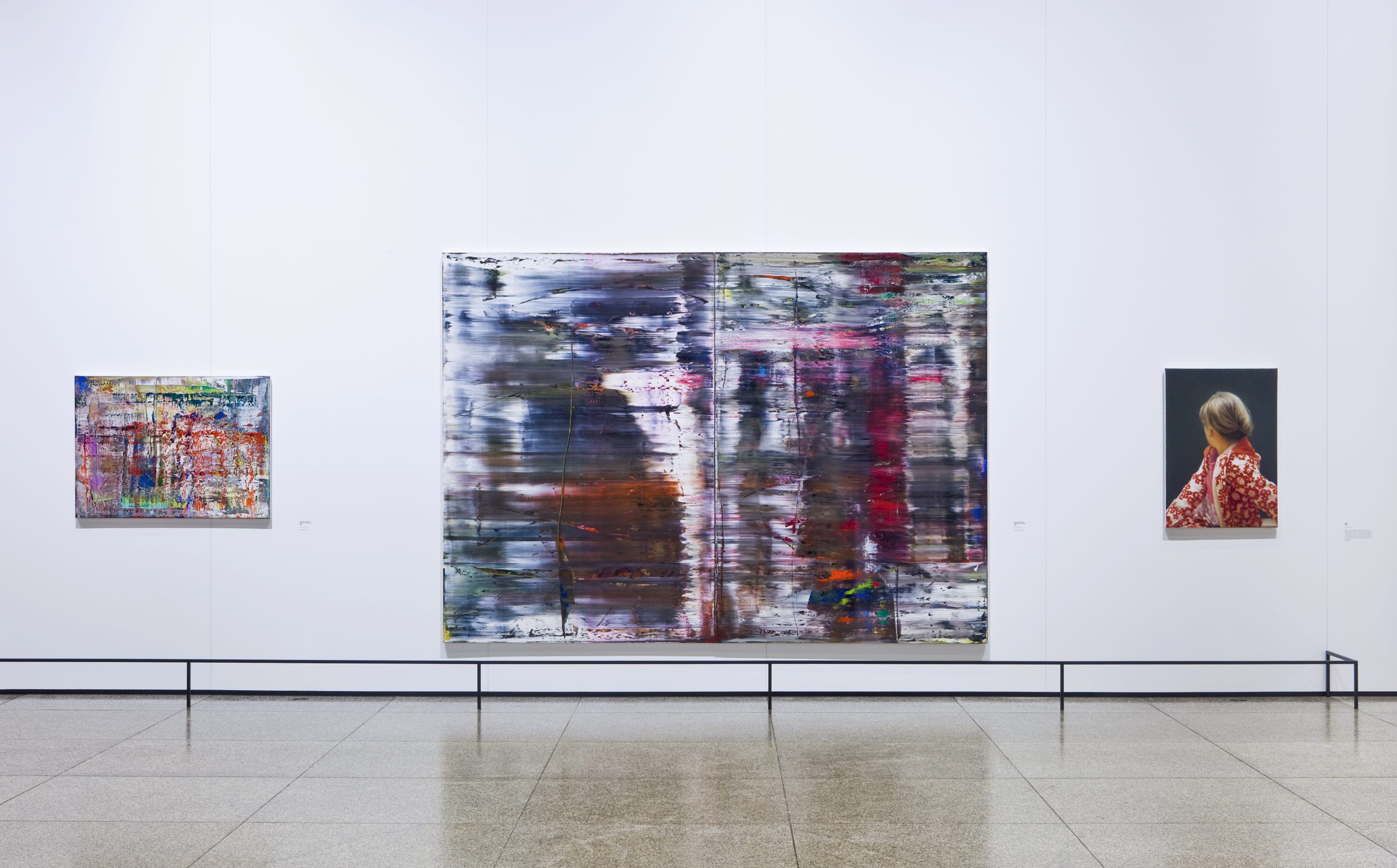On February 9, 2012, Gerhard Richter celebrated his 80th birthday. In honor of one of the most important contemporary artists, whom the British daily newspaper The Guardian dubbed “Picasso of the 21st century” in 2004, the National Gallery is showing the comprehensive retrospective Gerhard Richter: Panorama in collaboration with the Tate Modern in London and the Center Pompidou in Paris .
The term panorama comes from Greek and consists of a combination of the words “everything” and “see”. In German usage it has established itself as a synonym for panoramic view or circumspection, for a clear view over 360 degrees. When you look around, what you see is revealed in a connection between time and movement. Not just one view is perceived, but rather many views that combine into a single unit over the course of the panoramic view. Accordingly, the exhibition on the upper floor of the Neue Nationalgalerie is designed as a wide view and unfolds in spacious, open spaces. Around 140 paintings and five sculptures, which were selected in close collaboration with the artist, provide an insight into Richter's complex work, which he created over five decades.
The exhibition is laid out chronologically. This makes what is special about Gerhard Richter's work obvious. This specialness lies, on the one hand, in the much-discussed simultaneity of abstract and figurative works, and on the other hand, it lies in the interplay of repetition and change that is revealed in the chronological sequence of the works. So we consciously decided against organizing according to topics or styles. Such a concept would actually hide what is special about Richter's work, as it separates things that are stylistically or thematically disparate, even if they were created at the same time. In the Neue Nationalgalerie, on the other hand, a panorama opens up to you in which figurative representations stand next to abstract color experiments, old master-like landscapes, seascapes and portraits next to city views that - in their gestural dissolution - are hardly recognizable as such. The famous vanitas motifs such as candles and skulls appear in close proximity to expressive, complex abstractions.
At one point, however, we break our guideline of chronology: When you enter the museum and the exhibition, your first glance will not be the painting Table from 1962, which is the first work mentioned in Richter's catalog raisonné. Rather, you are initially surrounded by the large-format abstract squeegee paintings that define Richter's recent work. In our exhibition, the panorama of the artistic development process unfolds from this sphere of the present, before finally returning to this present at the end of the tour.
Gerhard Richter, born in Dresden in 1932, studied mural painting at the art academy in his hometown and quickly received his first commissions in the still young GDR. In 1959, a visit to documeta II in Kassel, led by Werner Haftmann, was a key experience for him. He was deeply impressed by abstract works by Jackson Pollock and Lucio Fontana. “This impudence! I was very fascinated and very affected by it. I could almost say that these pictures were the real reason for leaving the GDR. I noticed that something was wrong with my way of thinking," Richter recalled in 1986. In the spring of 1961, just a few months before the Wall was built, Richter left the GDR with his wife Ema and finally reached Düsseldorf via West Berlin. However, Richter - even later, when he taught as a professor at the Düsseldorf Art Academy from 1971 to 1993 - by no means followed the developments dominant in the West in a straight line. The radicalism that Richter appreciated in the works of Pollock and Fontana or in the artistic approach of the Fluxus scene of the early 1960s did not become his own path. He counteracted the progressive tendencies towards “breaking boundaries” in art with the traditional medium of painting and remained true to painting even where he explored its limits. With as much mischievousness as seriousness, he confronted great artists such as Marcel Duchamp and, for example, with Ema (Nude on a Staircase) from 1966, contradicted Duchamp's famous dissection of painting in the nude descending a staircase from 1912.
